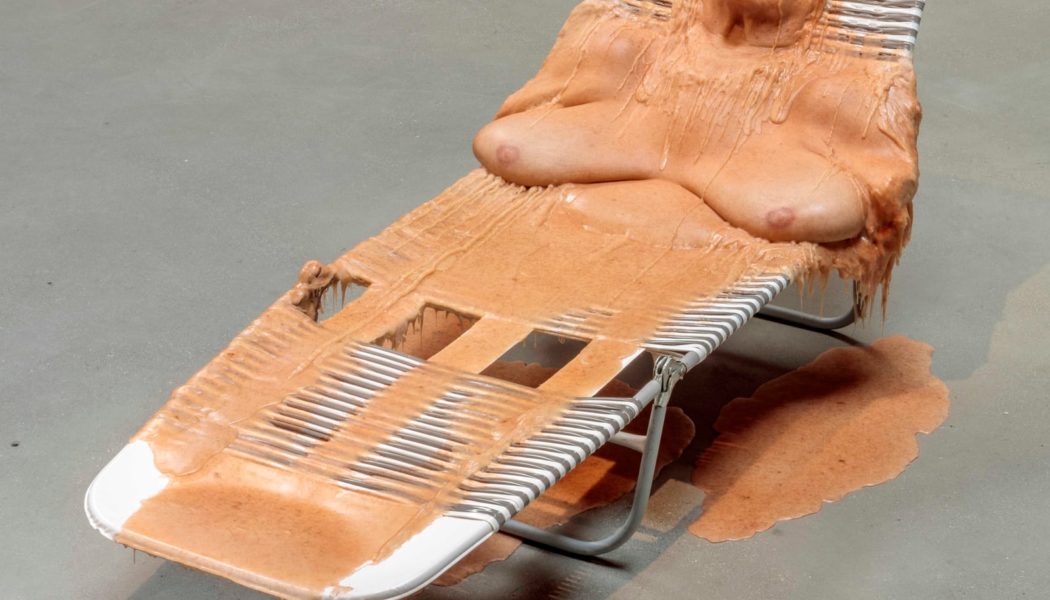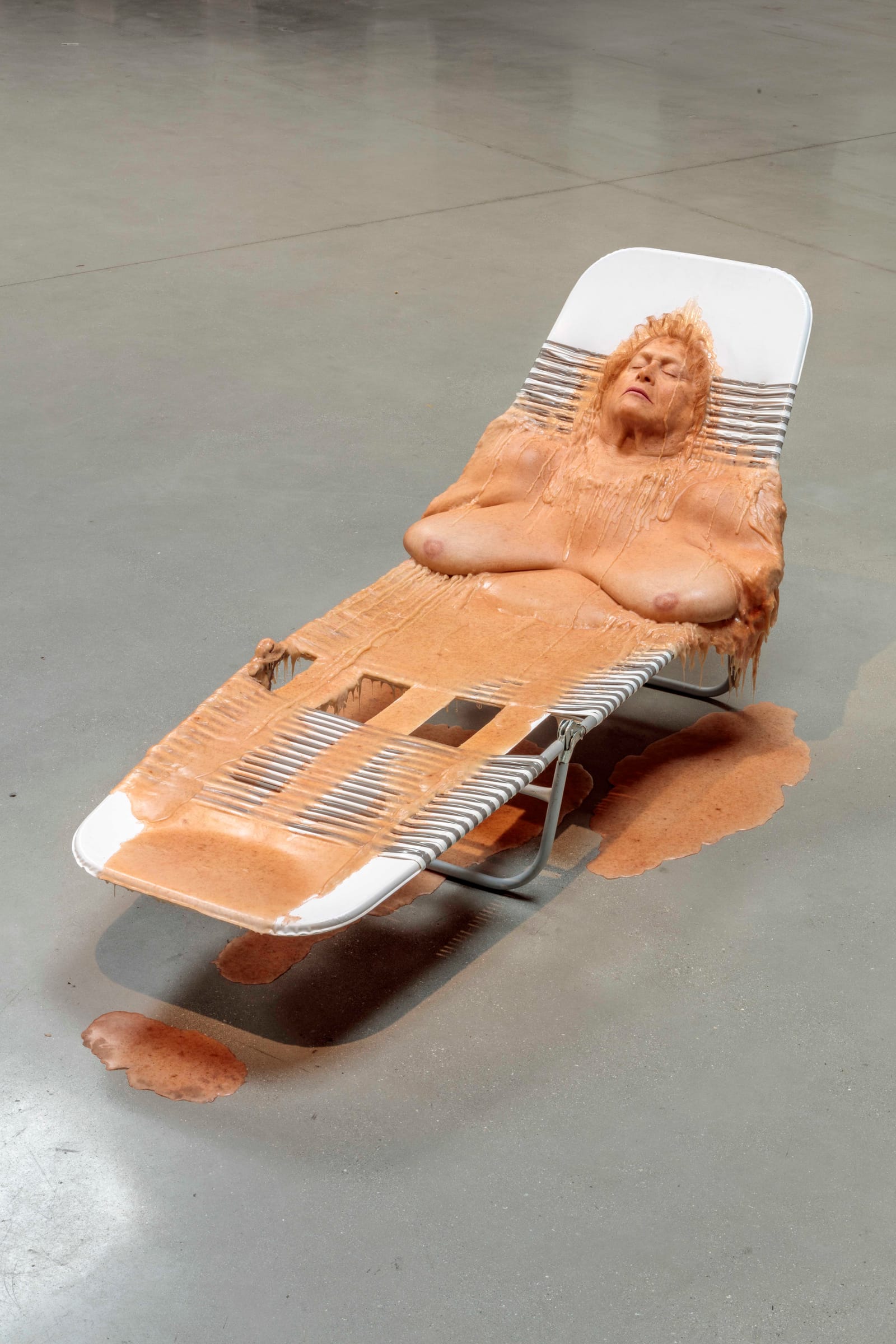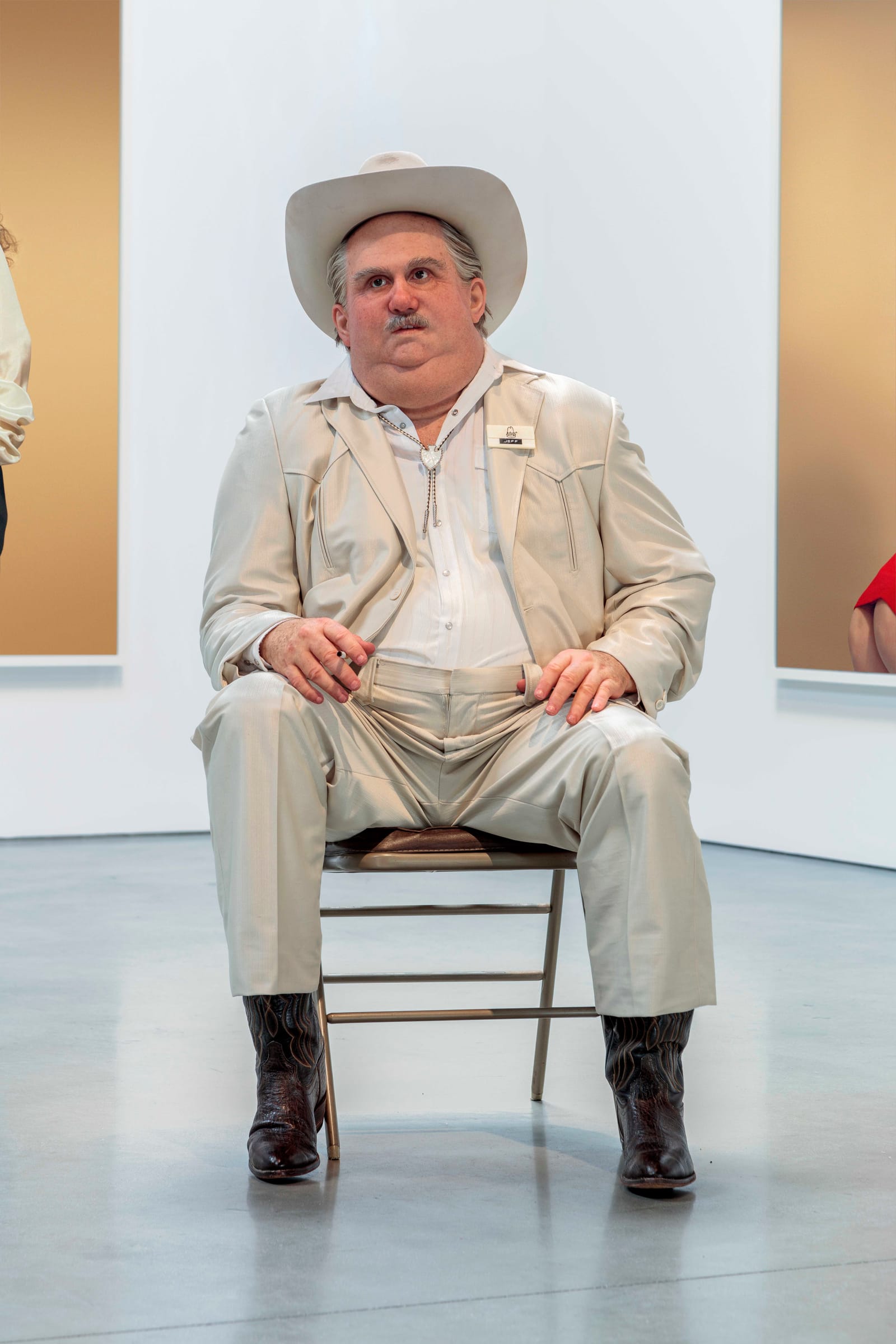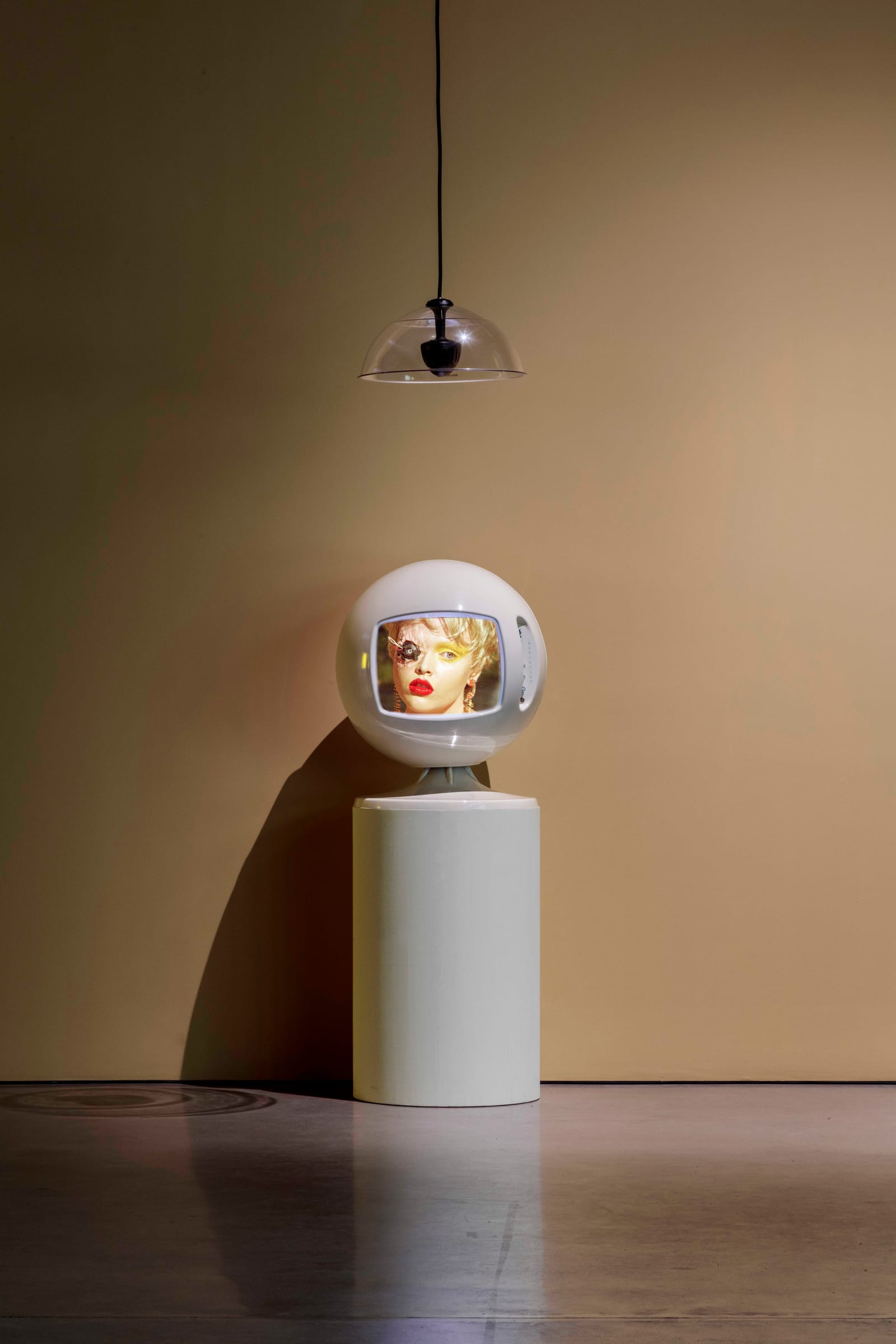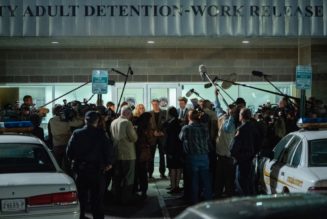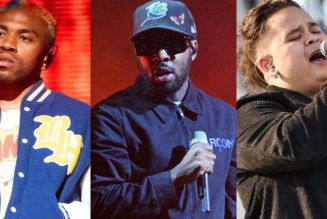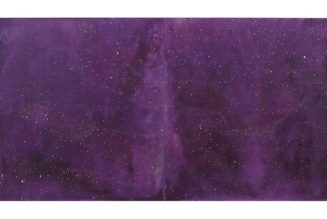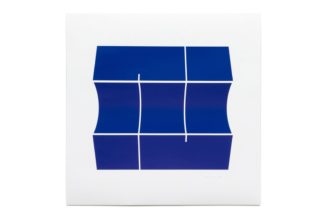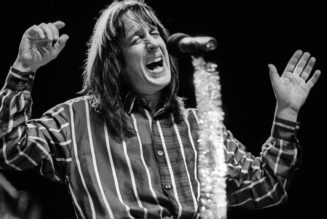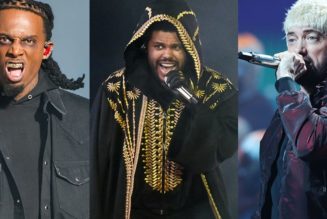British photographer, filmmaker, performance artist and all-around It-girl, Nadia Lee Cohen, is a starlet of our era. Her palpable, cinematic style, whether conscious or accidental, has become a defining characteristic of the visual vernacular of 2023. Most recently, you may have seen the Interview cover shoot of Lana Del Rey that took the Internet by storm; yes, that was Cohen behind the camera. Or perhaps you wandered into Cohen’s solo show at Jeffrey Deitch in Los Angeles this past summer and fell into the multiverse of the artist’s portraits, videos and installations.
If you opened Instagram in February, you would have seen countless posts of Cohen wearing a gorgeous cherry red Ferragamo dress during Milan Fashion Week. In whatever iteration you may have encountered her and her work, Cohen certainly lives in the nuances and particularities that punctuate the cross section of art, celebrity and fashion as we consume it today.
Recently, Cohen released the fourth edition of her book Women (published by IDEA), which includes 100 distinct photographs that dance between the surreal and the eerily familiar. Her crisp and vivid portraits sing across the page, except you’re not quite sure if the soundtrack is a melancholic ballad or Top 10 disco hit. In any case, Cohen says she’s “inspired by art and photography between the early 1970s to the late 1990s” and that “the cinema, art, architecture and design I’m influenced by bleeds into everything I make.”
Cohen’s reference to aesthetics of the past is clear in her visual vocabulary, (she cites influences such as Stanley Kubrick, Nan Goldin and even the famed, fictitious character Tony Soprano) yet somehow, as Cohen astutely puts it, “the past isn’t necessarily the reference, the reference is sort of ‘nowhere.’” Though Cohen specifically points out that it makes her “cringe when people theorize their own work,” she is certainly onto something.
One might wonder if this sense of “nowhere” is part of the unique appeal of Cohen’s work, an element that has cultivated and continued to captivate her growing audience. This draws to mind Cohen’s cover shoot for the September 2022 issue of Interview, in which Kim Kardiashian is shown as we have never seen her before, with bleached hair and eyebrows, adorned in a Canadian tuxedo, and simple white tank top-the ultimate Americana outfit. With this schism between quintessentially American aesthetics, and a relatively shocking styling of one of the most famous women in the world, Cohen strikes an immaculate balance between the past and the future—one in which all roads point to nowhere. Or perhaps, better yet, the mélange of all of the contradictions that articulate our present moment.
One might wonder if this sense of “nowhere” is part of the unique appeal of Cohen’s work, an element that has cultivated and continued to captivate her growing audience. This draws to mind Cohen’s cover shoot for the September 2022 issue of Interview, in which Kim Kardiashian is shown as we have never seen her before, with bleached hair and eyebrows, adorned in a Canadian tuxedo, and simple white tank top-the ultimate Americana outfit. With this schism between quintessentially American aesthetics, and a relatively shocking styling of one of the most famous women in the world, Cohen strikes an immaculate balance between the past and the future—one in which all roads point to nowhere. Or perhaps, better yet, the mélange of all of the contradictions that articulate our present moment.
“The past isn’t necessarily the reference, the reference is sort of ‘nowhere.’”
Whether in a gallery, on a magazine cover, or in a fleeting moment on Instagram, Cohen dissolves the boundaries we might unconsciously seek when absorbing and processing imagery. In her solo show, HELLO, My Name Is, at Jeffery Deitch this past summer, Cohen did just that. In one segment of the exhibition, various portraits in which Cohen had styled and captured herself as different characters lined the wall. To put together these personas, Cohen tells us that “narrative is really the main aspect that drives [her] and [she panics] if faced with a white wall.” She goes on to write that she “[needs] some form of story in order to understand how [she is] going to approach each project.” Once that’s worked out, Cohen “can usually visualize how the images will look before turning up to take them.”
It is evident that Cohen approaches her practice and characters with deep care and commitment. HELLO, My Name Is was the “last time” she felt really excited or invigorated about something, as she “never had the opportunity to show a solo show in the U.S. before.” So she “ate, slept and breathed it” for months prior to opening to make sure it was something she was proud of.
Although the show spanned different series by the artist, one of the central focuses was her “self” portraits, for which the show, and its accompanying book, were titled. Cohen uses herself as a tool in the creation of each character, rather than a reflection of her own identity. She utilizes her own body to embody someone else entirely, while conceptualizing and executing each character with the utmost attention to detail. With the use of typical film fare, such as prosthetics, makeup and costumes, Cohen brings her characters to life in all of their glory.
“Narrative is really the main aspect that drives me and I panic if faced with a white wall.”
The artist struggles “to get into something that doesn’t have a story attached, even if I’m the only one who knows the plot,” yet the magical part is that we all get to envision the story that her meticulously crafted characters represent. Critically, Cohen’s cinematic rendering married with the poised rapport of each subject deems them important, no matter the narrative arc the viewer ascribes to them.
So it’s no wonder that someone like Tony Soprano might be an influence to Cohen. The artists has gotten to know this character (alongside most of TV-viewing America in the early 2000s) and he has clearly resonated. Though Cohen is interested in creating scenes of “somewhere you might not know,” the “nowhere” constructed by powerful narratives becomes a “somewhere” that we revisit time and time again (like North Caldwell, New Jersey.)
Cohen tells us that she feels most at home “in the UK at my parents house in the countryside,” and goes on to say that “LA is a different sort of ‘home’—it’s the city I work the most in and the landscape that inspires me more than anywhere else I’ve visited.” Cohen feels a sense of independence and freedom when she’s in LA, because the city is still an “unfamiliar place” for her, where she’s mostly an “observer”, adding to the magic that she still can’t pinpoint. Maybe it’s that arcane “LA Magic” that sustains all of Cohen’s many characters who occupy “somewhere we might not know.”
Words by Isabel Norsten for HYPEBEAST Magazine.
HYPEBEAST Magazine Issue 31: The Circle Issue is now available on HBX.
